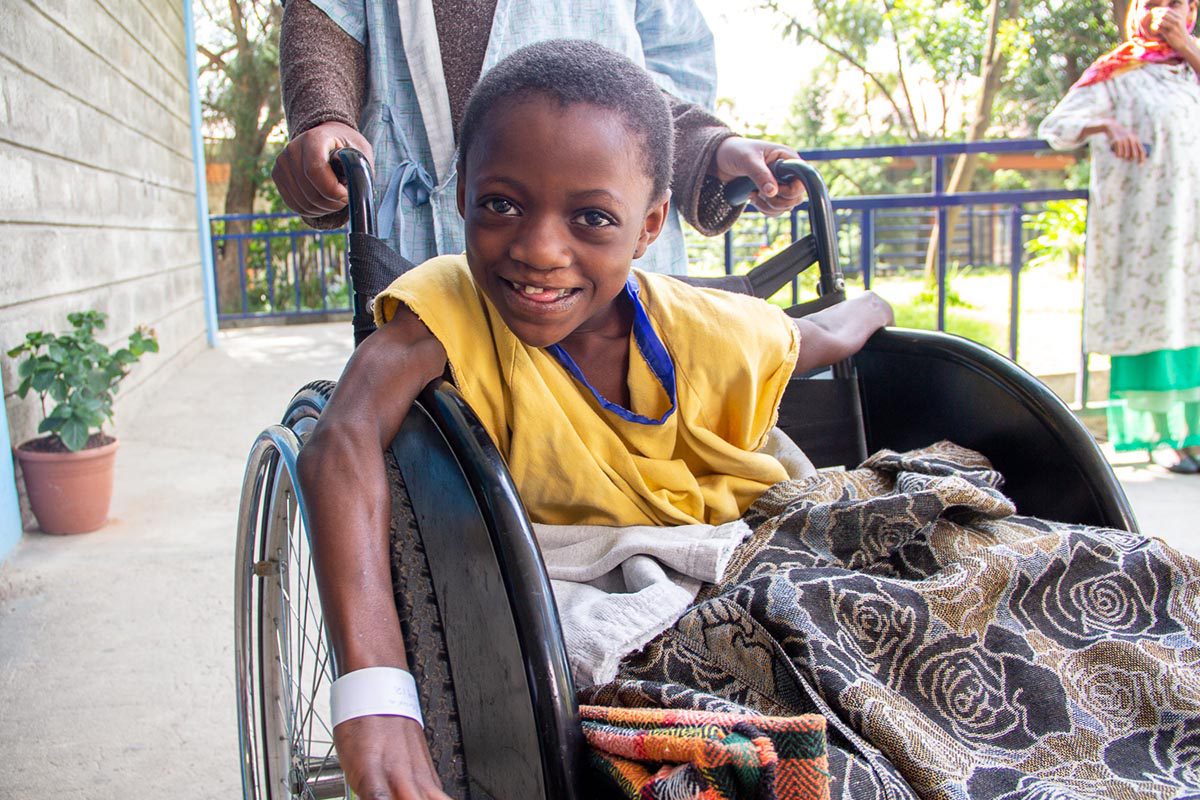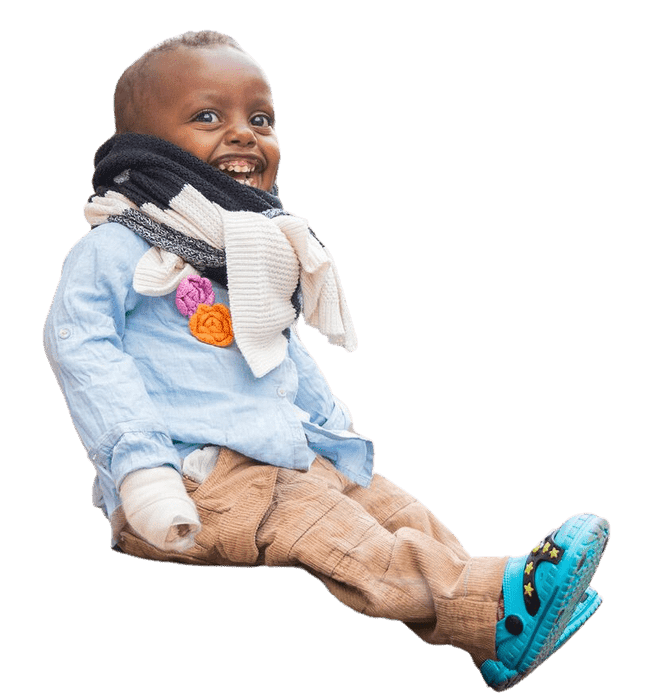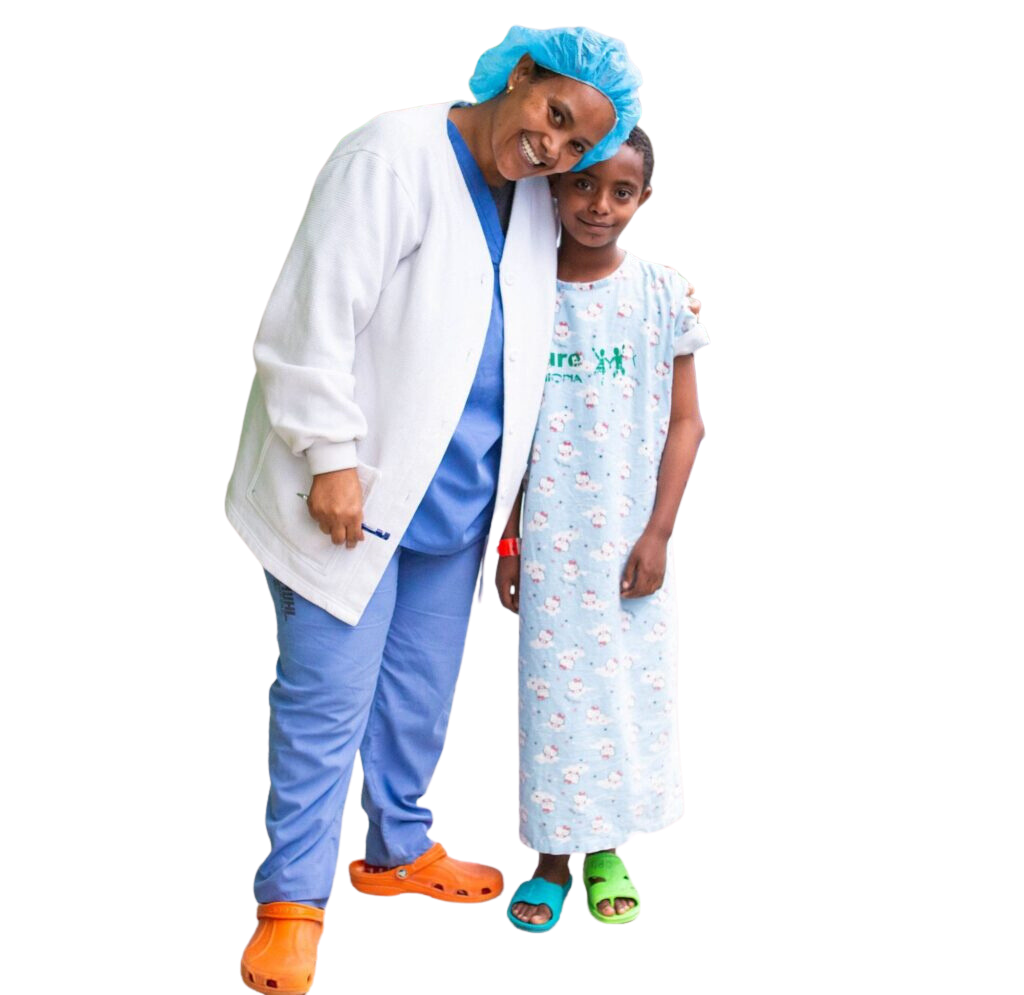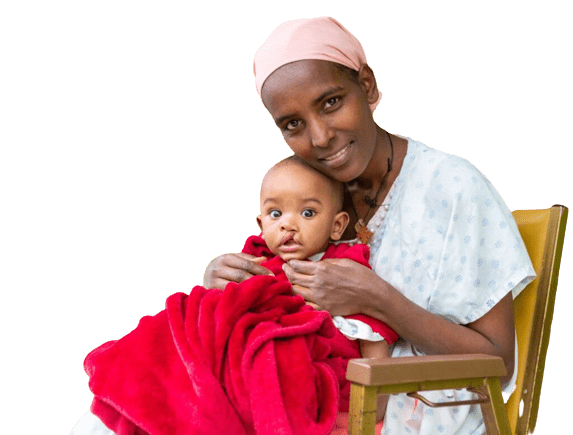“I went to many hospitals, and they told me that it was impossible to treat her.” Rehema is the mother of Hadija, a little girl from Tanzania who suffers from a congenital condition called popliteal pterygium, which affects the development of the skin. Hadija was born with thick webs of skin on the back of her knee joints, which made making walking impossible.
It’s a treatable condition, but in a country where medical care is difficult to access, Rehema hit brick walls each time she sought care for her wheelchair-ridden child. Rehema has been searching for help since Hadija was four months old. She is now six.
Doctor after doctor informed Rehema there was no help to be had, yet she maintained hope that a cure for her daughter existed. Then, a local NGO told her about CURE Ethiopia and gave her the contact information of a surgeon who worked there. Rehema reached out and found the one thing she’d been desperately seeking: hope. Soon, she and Hadija traveled from Tanzania to Ethiopia to begin a long, life-changing journey.
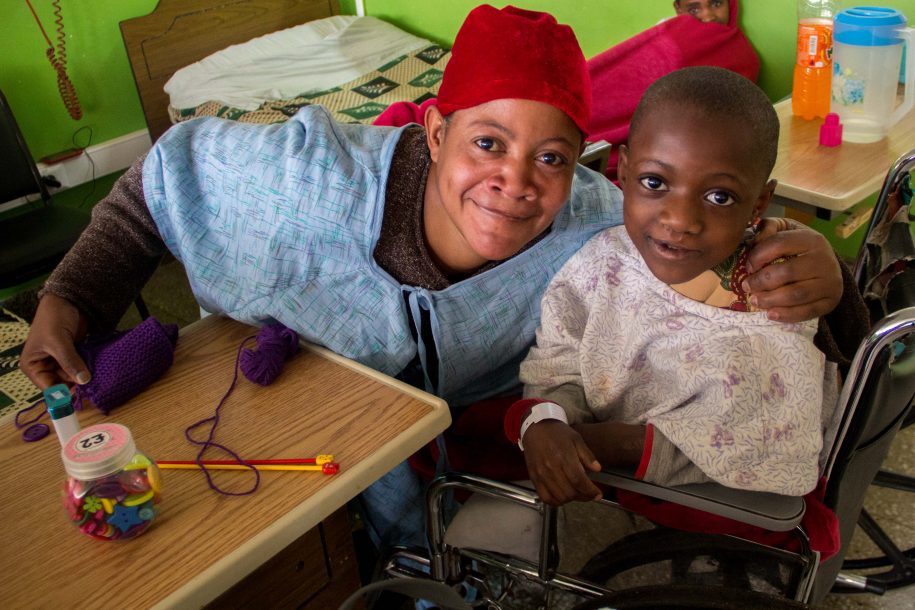
Hadija, the middle of three children, is a wheelchair-whiz with a sweet disposition and a contagious zest for life. This remarkable girl resided at CURE Ethiopia for the better part of a year, and over that time, she’s endured three difficult surgeries to get out of her wheelchair and walk on two straight legs.
To begin her healing journey, Hadija left her home, her school, her family and friends, and bravely succumbed to the hard work and physical pain to overcome her disability.
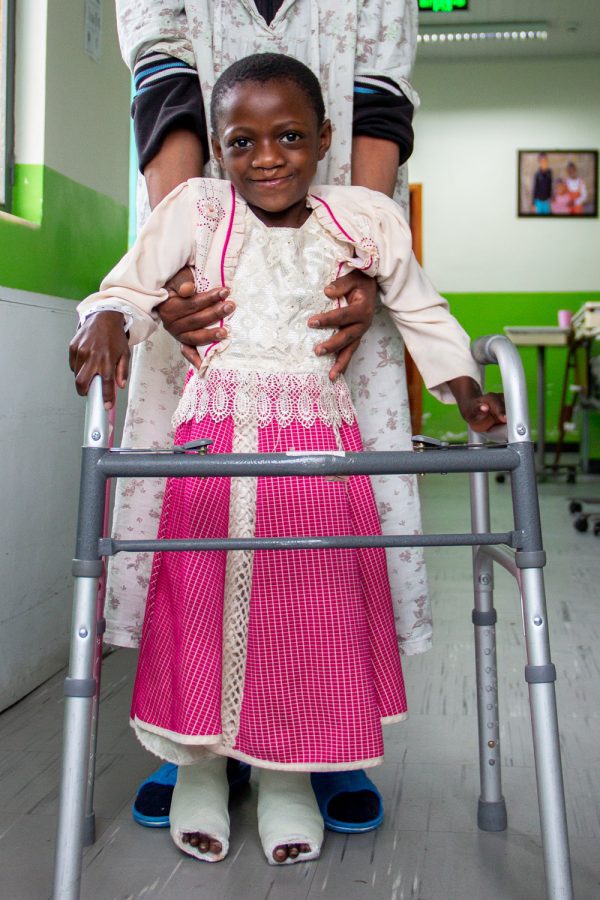
She had three procedures within the first month of her stay at CURE Ethiopia; after that, many months were spent recovering, participating in physical therapy, and playing. For the next five months, Hadija wore a series of frames on her legs, greatly limiting her mobility. After the frames came casts.
A month after the frames came off, she took her very first steps with the aid of a walker. By the following month, the walker was history, and she began walking with the help of crutches. Two months after that—and 10 months after her arrival—doctors sent her home to Tanzania. She still had casts, but they could be removed by a clinic close to home. Her healing will continue with the aid of an orthopedic shoe made just for her.
The scared little girl who came to CURE Ethiopia is not the same girl who left. We will miss the sound of her laughter bouncing through our hallways; however, we delight in Hadija’s physical and emotional transformation. For Rehema, too, this has been a time of healing. Her fear of the uncertainties of the future has passed, she told us. “I have experienced more faith, strength, and hope since we came here.”
About the CURE Children’s Hospital of Ethiopia
Established in 2008, CURE Ethiopia performs over 2,500 life-changing reconstructive and orthopedic surgeries every year for children suffering from treatable disabilities. Strategically located in the capital city of Addis Ababa, the teaching hospital has 70 beds and four operating rooms. CURE International uses this facility to multiply its efforts by partnering with The College of Surgeons of East, Central, and Southern Africa (COSECSA) to serve as a regional learning institution by implementing an orthopedic pediatric training program at the residency and fellowship levels. In addition to world-class clinical service, CURE Ethiopia ministers to the emotional and spiritual needs of patients and their communities.
